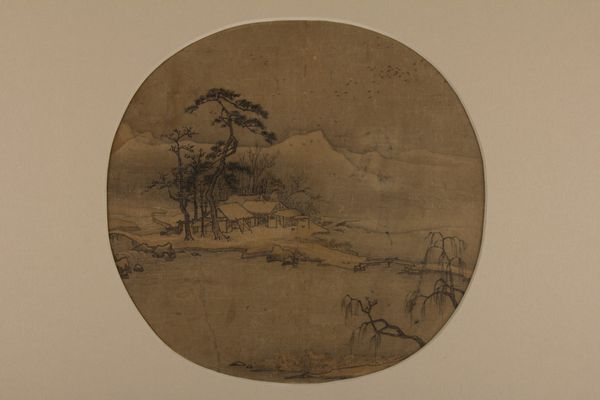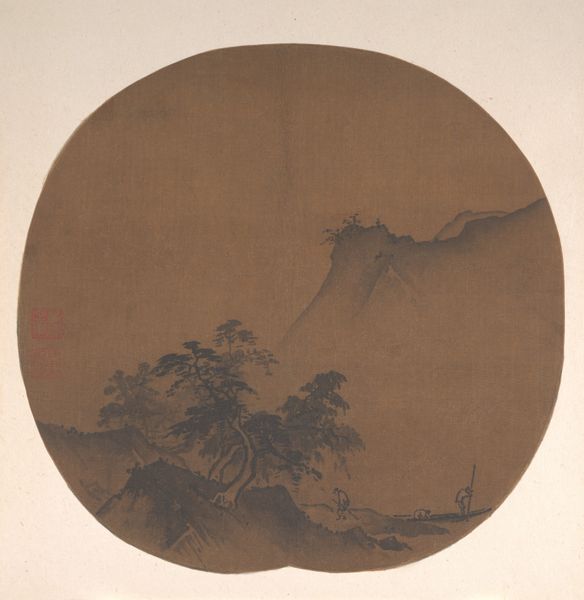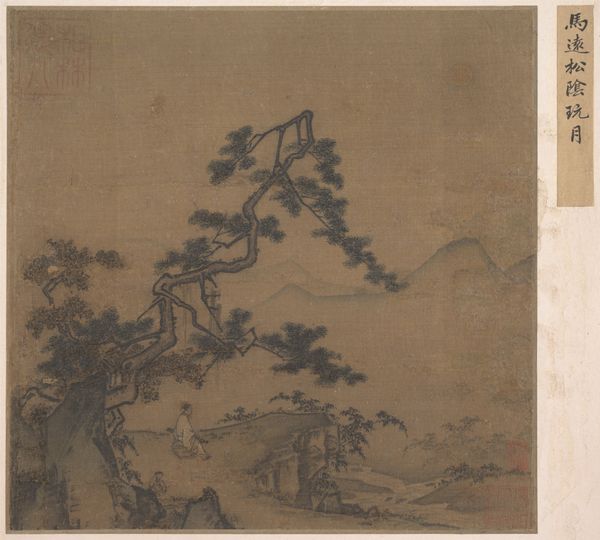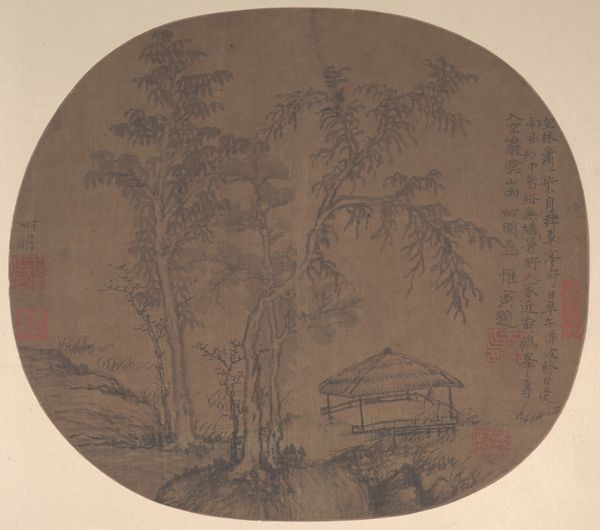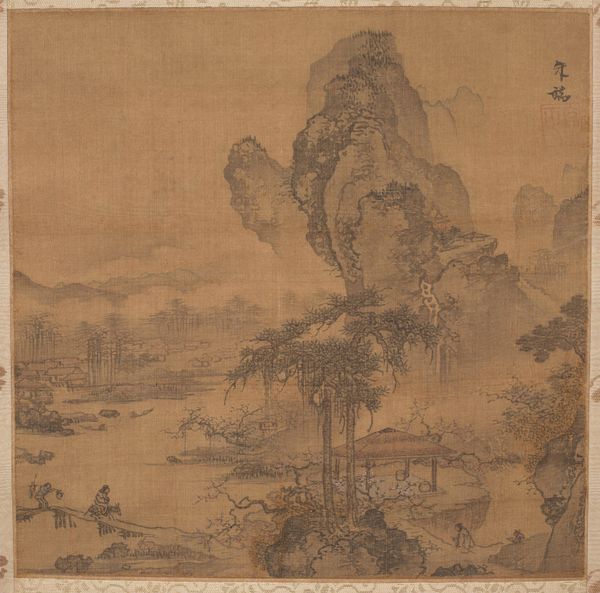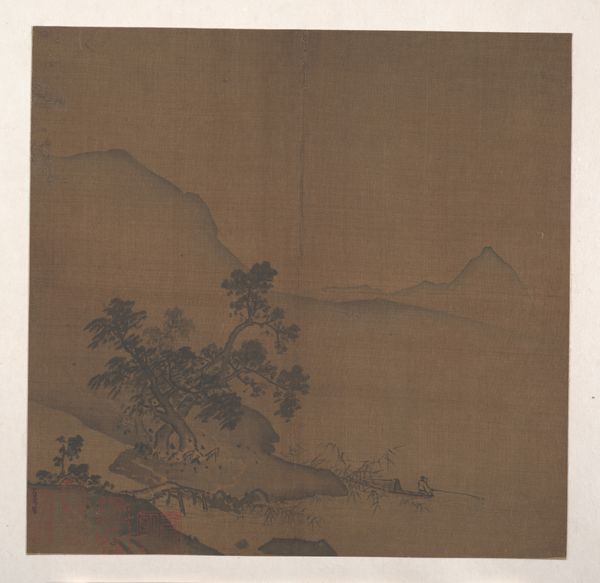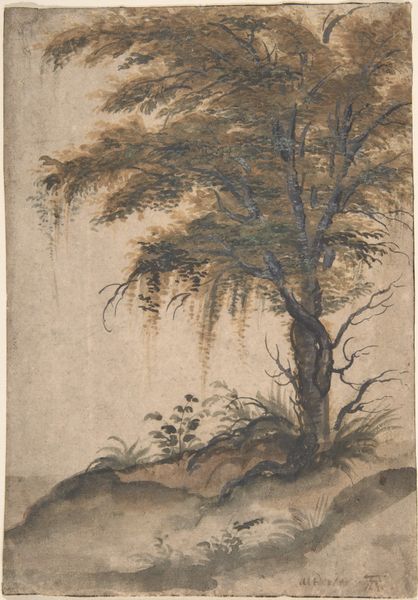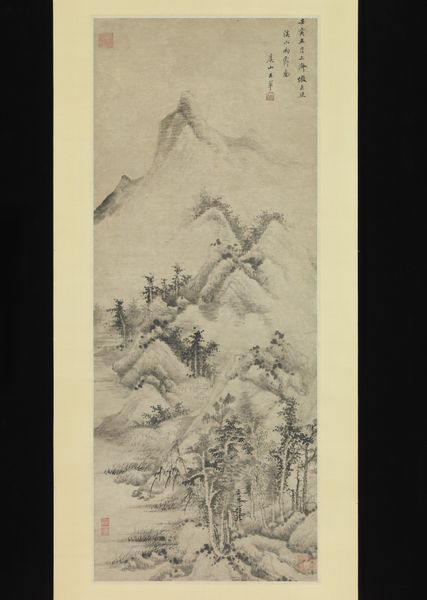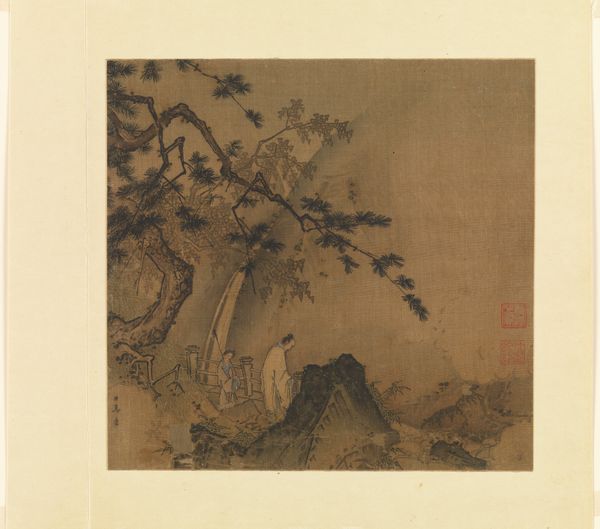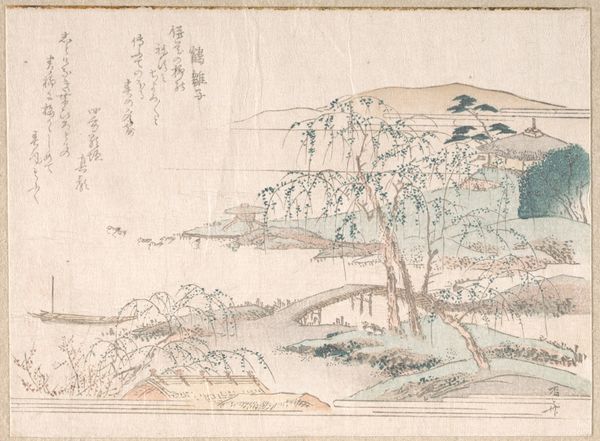
drawing, ink, pencil
#
drawing
#
asian-art
#
landscape
#
21_yuan-dynasty-1271-1368
#
ink
#
pencil
#
history-painting
Dimensions: Image: 10 1/2 × 13 1/4 in. (26.7 × 33.7 cm)
Copyright: Public Domain
Curator: Let’s turn our attention to "Recluse Fisherman, Autumn Trees," a fan-shaped drawing attributed to Sheng Mao from 1349. It's currently housed at the Metropolitan Museum of Art. Editor: My first impression is how somber it feels. The limited palette and the stark branches of the trees evoke a sense of solitude. It's rendered in ink on paper or silk. Curator: Yes, and it is believed to have been executed in ink and light color on silk. Sheng Mao worked during the Yuan dynasty, a period marked by Mongol rule in China. It's important to view his work within this context of cultural and political upheaval, informing the melancholy we see here. Editor: The technique itself interests me—the precision in the linework, especially in depicting the fisherman and the delicate rendering of the leaves, must have required enormous skill and patience. How accessible were materials like silk and specialized brushes during that period? Did the Mongol rulers affect their production and availability? Curator: Those are crucial points. Access to high-quality materials would have been a privilege reflecting one's social standing and connection to established artistic circles. The Mongol patronage did shift artistic priorities and resources, although the full extent of that shift requires deeper study. Consider also the significance of landscape painting as a vehicle for expressing dissent and withdrawal from public life during times of political turmoil. The 'recluse' theme, and fishing itself, spoke of freedom and anti-establishment feeling. Editor: The "recluse" idea speaks to a complex relationship with labor. The fisherman is working, certainly, but within the context of personal retreat. The image seems carefully constructed to present an ideal, down to the angle of each ripple around the boat. What kind of fisherman would be able to dedicate his entire life to that pursuit during such upheaval? Curator: Absolutely, it's an idealized image, likely resonating with a literati audience who might have aspired to that lifestyle even if they couldn’t fully realize it. The painting serves a purpose beyond representation. The act of depicting this idealized scene reinforces a particular cultural value and also offered the painting for other to identify as well as purchase it for status within this value set. Editor: Ultimately, even in its seeming simplicity, it reminds me of how profoundly the means of artistic production can shape not only what is created but also the ideologies that are celebrated in society. The fan format itself gives a more "everyday" aspect, more directly intended for use, to an evocative sentiment. Curator: A beautifully complex piece, and thank you for shining a light on the materiality of this seemingly straightforward historical subject!
Comments
No comments
Be the first to comment and join the conversation on the ultimate creative platform.
